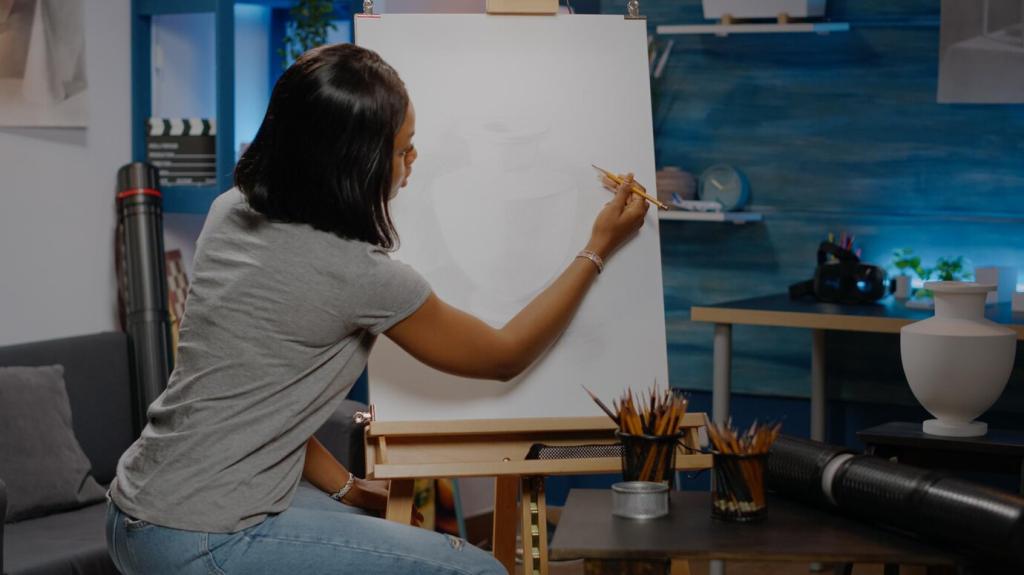Tools and Setup: Make Crisp Lines Easier
Micron-style fineliners deliver consistent width, brush pens give dynamic variation, and dip nibs offer the richest, subtle flare. Match tool to intent: architectural clarity loves fineliners; character portraits thrive on brush pens. What tool do you trust for inking tricky hair strands? Share your pick.
Tools and Setup: Make Crisp Lines Easier
Smooth Bristol reduces friction for straight pulls; vellum tooth grips for controlled curves. On tablets, tune stabilization lightly, adjust pressure curves, and calibrate parallax to where your hand actually draws. Test three settings, save presets, and note results. Comment with your favorite stabilization value and why.


